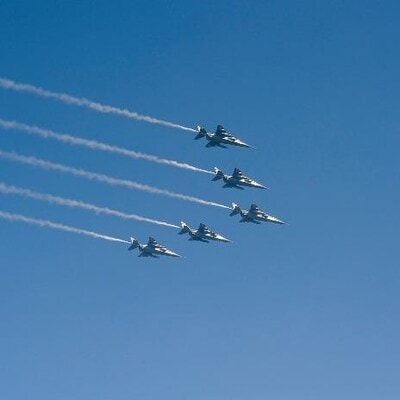Taiwan detects 22 PLA aircraft, 6 naval vessels near its territory | World News

)
Taiwan has been governed independently since 1949. However, China considers Taiwan part of its territory and insists on eventual reunification, by force if necessary Photo: PTI
Taiwan’s Ministry of National Defence (MND) has stated that 22 Chinese military aircraft, six naval vessels and one official ship were detected near Taiwan from 6 am (local time) on Thursday to 6 am (local time) on Friday.
According to Taiwan’s Ministry of National Defence (MND), 18 of the People’s Liberation Army’s (PLA) aircraft crossed the median line of the Taiwan Strait and entered Taiwan’s northern, southwestern, and eastern Air Defence Identification Zone (ADIZ).
In response to Chinese incursions, Taiwan sent aircraft and naval ships and deployed coastal-based missile systems to monitor PLA activity.
Taking to X, Taiwan’s MND stated, “22 PLA aircraft, 6 PLAN vessels and 1 official ships operating around Taiwan were detected up until 6 a.m. (UTC+8) today. 18 of the aircraft crossed the median line and entered Taiwan’s central and southwestern ADIZ. We have monitored the situation and responded accordingly.”
This latest Chinese military activity adds to a series of similar provocations by Beijing in recent months. China has increased its military activities near Taiwan, including regular air and naval incursions into Taiwan’s ADIZ and military exercises near the island.
Since September 2020, China has intensified its use of gray zone tactics by increasing the number of military aircraft and naval vessels operating near Taiwan, according to a Taiwan News report.
According to Taiwan News report, gray zone tactics are considered “an effort or series of efforts beyond steady-state deterrence and assurance that attempts to achieve one’s security objectives without resort to direct and sizable use of force.
Taiwan has been governed independently since 1949. However, China considers Taiwan part of its territory and insists on eventual reunification, by force if necessary.
Earlier in July, Taiwan President Lai Ching-te accused the Chinese government of misinterpreting a United Nations resolution to justify its military activities against Taiwan, the Central News Agency (CNA) reported. He condemned China for its inaccurate interpretation of UN Resolution 2758, including drawing an inappropriate linkage to its “One China” principle.
While addressing the annual summit of the Inter-Parliamentary Alliance on China (IPAC) in Taipei on Tuesday, Lai said that this move is aimed to not only “construct a legal basis for China’s military aggression against Taiwan” but also to obstruct Taiwan’s efforts to participate in international organisations
China claims that the UN resolution confirmed its one-China principle, which implies that there is only one China in the world and Taiwan is part of China, according to CNA report.
After Lai Ching-te’s remarks, the IPAC adopted a “model resolution.” According to the resolution, members will seek to redress what they called China’s “distortion” of the UN resolution by passing resolutions in their respective parliaments.
In its model resolution, IPAC raised concern over “sustained efforts” by Chinese officials to distort the meaning of the resolution passed by the United Nations General Assembly in 1971, which states that the People’s Republic of China (PRC) is “the only legitimate representative of China to the United Nations,” Central News Agency (CNA) reported.
During the summit, the cross-national parliamentarians’ group stressed that the UN resolution “does not establish the One China Principle as a matter of international law” and “nothing in law prevents the participation of Taiwan in international organisations,” the report said.
Furthermore, the cross-national parliamentarians’ group said that the UN document had “no bearing on the sovereign choices of other countries concerning their relationship with Taiwan” while expressing support for Taiwan’s participation” in UN agencies, according to a CNA report.
The IPAC said that the resolution did not include Taiwan, address its political status, or establish China’s sovereignty over Taiwan.
As many as 49 members of legislatures from 23 countries and the European Parliament, all being IPAC members, participated in the annual summit of IPAC. According to Taiwan’s Ministry of Foreign Affairs, the group has over 250 members around the world.
(Only the headline and picture of this report may have been reworked by the Business Standard staff; the rest of the content is auto-generated from a syndicated feed.)
First Published: Sep 13 2024 | 10:02 AM IST




